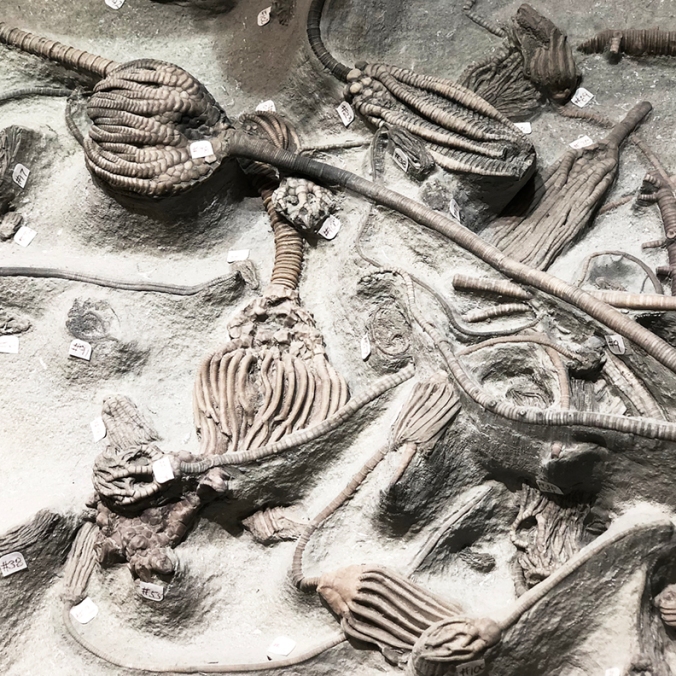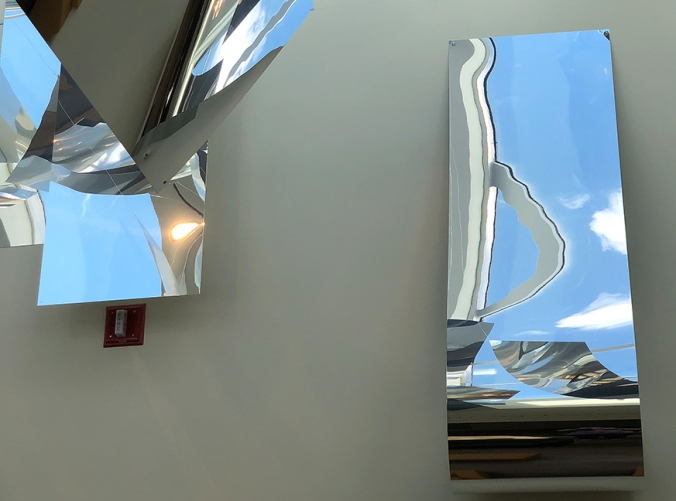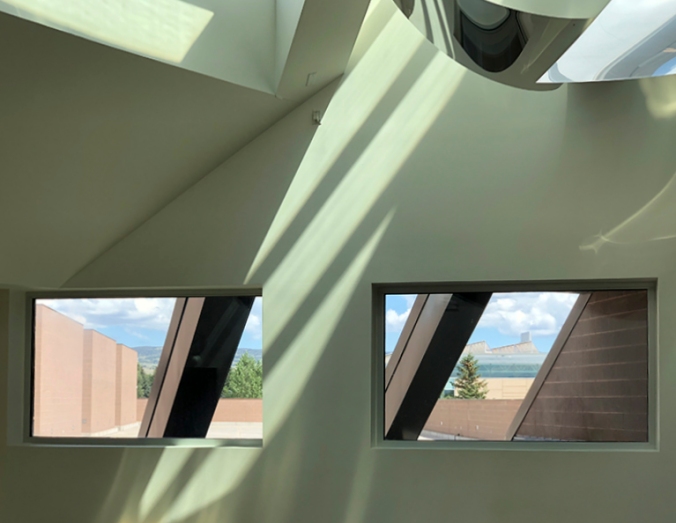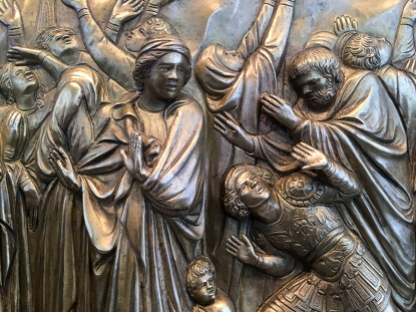
Hypacrosaurus, a duckbill dinosaur of the late Cretaceous
The second day of my trip I also went to the Wyoming Dinosaur Center, in Thermopolis. Unfortunately, I was so sleep-deprived that I couldn’t do it justice, which was a shame. This is a fantastic museum house in what is essentially an enormous pole barn. Why is something like this in Thermopolis? Because dinosaurs are being excavated here! The center raises donations to support its excavation work on a nearby ranch, as well as its preparation work, which museum visitors can observe through viewing windows. They’re planning for a beautiful new facility where they can better house their fossils and fossil replicas, and they have lots of both. Visitors also can pay to assist at the dig site, which in turn supports the scientific work.
Not just dinosaurs are on display; the museum is organized to show the progression of evolution from early organisms through the age of the dinosaurs, birds, and early mammals. I found myself wishing I had the time to read every single interpretive sign. Most of these iPhone photographs are of actual fossils, not replicas.

Fossil brittle stars – Wyoming Dinosaur Center

Fossil crinoids (sea lilies) – Wyoming Dinosaur Center
An especially prized fossil here is this one from China, of Microraptor, a small dinosaur with feathers not just on its arms but also its legs. You can see the impression of the feathers on all four limbs and also at the end of the tail.

Microraptor, a small dinosaur with feathers on all four limbs – Wyoming Dinosaur Center
The museum has plenty of large, complete dinosaur skeletons. Among the smaller dinosaur fossils is this beautiful specimen of Stenopterygius, a Jurassic-age ichthyosaur. But not just any old Stenopterygius. To quote the interpretive sign: “Ichthyosaurs are vivaparous, meaning they give birth to live young instead of laying eggs. The baby would come out tail-first to prevent them from drowning. This specimen preserves a mother in the act of giving birth.” Wow! And indeed, in the second photo below you can see the baby’s skeleton dangling below the mother. I’ve also included a shot of just the head and upper body because it is so gorgeous.

A female stenopterygius…

…in the process of giving birth! – Wyoming Dinosaur Center
Another surprise: Fossilized dinosaur embryos and a reproduction of a nest of baby dinosaurs.

Fossilized dinosaur embryo – Wyoming Dinosaur Center
From tiny to enormous: Kids will love the big dinosaur skeletons.

This Triceratops horridus skeleton is the actual fossil, not a replica – Wyoming Dinosaur Center
-

This head belongs to a complete replica Pliosaur skeleton – Wyoming Dinosaur Center
I’ve been in a lot of natural history museums, so it’s possible I’m just forgetting, but to my knowledge I’d never seen a fossilized mortichnial trackway before. It’s the track or footprints of a dying animal—in this case, the final 32 feet of life of a horseshoe crab, which extended across nine large excavated panels on display. This particular exhibit, more than any other at the center, really brings it home to you that all these animals once were as alive as you are now.

Fossil horseshoe crab and last segment of mortichnial trackway – Wyoming Dinosaur Center
I’m no paleontologist, but I can hardly say enough good things about the Wyoming Dinosaur Center. It’s only a six-hour drive from Loveland, not counting stops, and I’d gladly make a special trip just to visit here again. I didn’t notice any “No photography” signs, so I’ve taken the liberty of posting all of these photos as a kind of advertisement for the center. Long may it live!

Whiptail stingray – Wyoming Dinosaur Center. I don’t know what exactly all those filaments are, but the beauty of this 50-million-year-old fossil blew me away.
















































